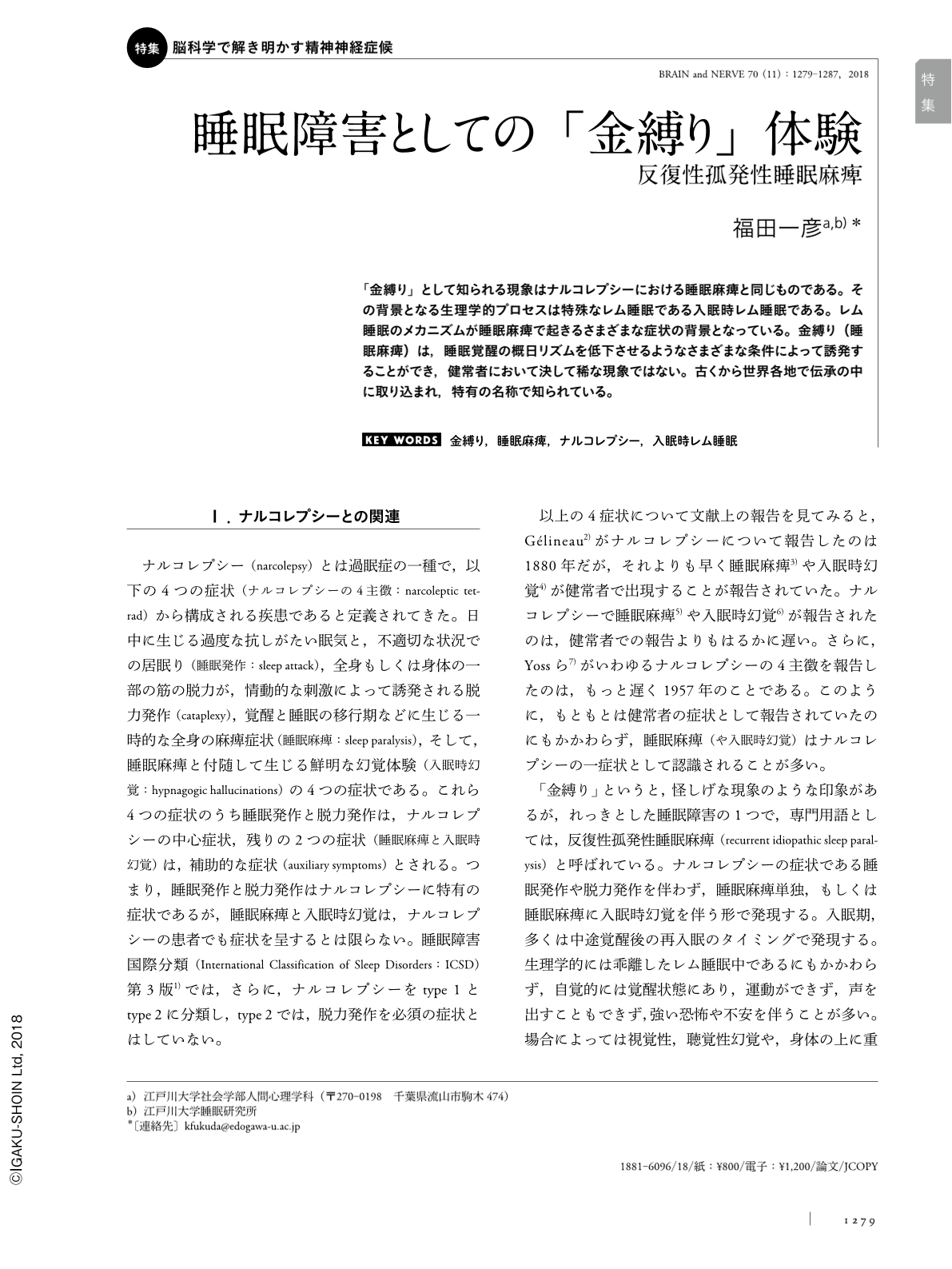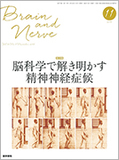Japanese
English
- 有料閲覧
- Abstract 文献概要
- 1ページ目 Look Inside
- 参考文献 Reference
「金縛り」として知られる現象はナルコレプシーにおける睡眠麻痺と同じものである。その背景となる生理学的プロセスは特殊なレム睡眠である入眠時レム睡眠である。レム睡眠のメカニズムが睡眠麻痺で起きるさまざまな症状の背景となっている。金縛り(睡眠麻痺)は,睡眠覚醒の概日リズムを低下させるようなさまざまな条件によって誘発することができ,健常者において決して稀な現象ではない。古くから世界各地で伝承の中に取り込まれ,特有の名称で知られている。
Abstract
The phenomenon called kanashibari in Japan is otherwise known as sleep paralysis and, is an established symptom of narcolepsy. Its physiological correlate is an unusual occurrence of rapid eye movement (REM) sleep, i.e., sleep onset REM periods (SOREMPs). Various symptoms of the phenomenon are explained by the mechanisms of REM sleep. SOREMPs can be observed in various situations, which indicate a lower amplitude of circadian rhythms, such as during interupted sleep, acute reversal of sleep and wakefulness cycle, and disrupted sleep of depressive patients and in newborn babies. The lifetime prevalence of the phenomenon in the general population is as high about 40%. The phenomenon can be a mysterious and frightening experience far affected people and called as various names according to the folklore beliefs of local communities, e.g., nightmare in Europe, hexendrücken in Germany, cauchemar in France, and old hag in Newfoundland. Japanese college students are known for their very short sleep length and disturbed sleep wake rhythms. Many students claim to have experienced daytime sleepiness. Some of them meet the criterion concerning sleep latencies and frequency of SOREMPs for multiple sleep latency test (MSLT) as narcolepsy. SOREMPs are frequently seen in healthy college students with certain lifestyles. Practitioners should be cautious to diagnose narcolepsy if the student shows disturbed sleep wake schedules.

Copyright © 2018, Igaku-Shoin Ltd. All rights reserved.


